Jules Verne: Improving forecast ahead
Published on January 12th, 2021
(January 12, 2021; Day 3) – Since setting sail off Ushant in the early hours of January 10 at 01h 33′ 46” UTC, Franck Cammas, Charles Caudrelier, and their four crew have been continuing their descent of the North Atlantic bound for the equator as they pursue the Jules Verne Trophy.
Having covered nearly 2,000 miles in two and a half days, at an average speed of 31.4 knots, the men of the 32m Maxi Edmond de Rothschild are nicely into the swing of things and, at the 17:00 UTC position report, had even treated themselves to a lead of 139 miles in relation to the record set by Francis Joyon.
This third day of has been punctuated by a weather transition along the length of a ridge of high pressure associated with the Azores High and the six sailors have had to deal with some very variable winds, which are much too light for their taste, in order to gain headway to the south. However, beginning tonight there will be a drastic change of scenery as the NE’ly breeze is set to flesh out as they approach Cape Verde.
In the week prior to the Maxi Edmond de Rothschild’s departure on the Jules Verne Trophy record attempt, the choice of weather window and the precise timing required to set sail from Ushant fueled numerous debates within the team’s weather cell.
The favored option represented the best possible compromise for securing a decent time in the negotiation of the North Atlantic and, most importantly, ensuring a good connection in the South Atlantic for hooking onto the low-pressure systems powering down towards the Southern Ocean.
The weather situation that the crew of the flying maxi-trimaran have endured for the past 24 hours, namely dying winds which require a great deal of maneuvering to constantly adapt the heading and point of sail to the variations in the strength and direction of the wind, is directly linked to this slot at the tail-end of the departure window.
“We sought to leave Ushant as late as possible in the weather window for two reasons,” explained Caudrelier. “Firstly, to avoid the worst of the low-pressure system level with the Iberian peninsula and secondly, to benefit from a favorable weather sequence in the South Atlantic in order to hitch a ride with a low-pressure system rolling out of Latin America and heading down to the Southern Ocean. It is this passage point that is the main driver behind the timing of our departure.”
However, the scenario has been clear since the start; this configuration could feature some disadvantages, the main one being the ridge of high pressure encroaching on Gitana 17’s route southwards.
“Conditions have been very fluky since our passage around Madeira and the past day has been largely coloured by a dying breeze – between 12 and 20 knots – with some big shifts in direction and a series of squalls,” admitted Caudrelier. “You can sense the ridge of high pressure sprawling across our wake and to the west of our position. Our choice is not the most optimal for the passage time to the equator as we’re leaving at the end of the slot. However, the equator is not our priority, the Jules Verne Trophy is our objective.”
By linking together a series of gybes and sparing no effort in the process, the six sailors on the boat have still managed to get the best out of their machine whilst maintaining a good speed. This is sure to be a source of satisfaction as dusk falls on this third day of the record, especially given that the gateway to the trade wind of the northern hemisphere is not far off now.
As such, a much meatier NE’ly breeze is soon set to fill the sails of the Maxi Edmond de Rothschild. Indeed, from tonight, the pace will pick up considerably aboard the latest Gitana as she makes towards Cape Verde. Santo Antão, the most northerly island of the archipelago, should be astern of them by around midday tomorrow.
Position of the Maxi Edmond de Rothschild on 12 January at 16:45 UTC:
Lead in relation to the record: 139.7 nm
Speed: 33.5 knots
Course: 195°
Team information – Tracker – Facebook
Since their start on January 10 at 01:33 UTC, to beat the round the world record of 40:23:30 set in 2017 by Francis Joyon and the crew of Idec Sport, they must finish prior to February 20 at 00:03:15 UTC.
Crew list:
Franck Cammas and Charles Caudrelier, skippers
David Boileau, trimmer/bowman
Erwan Israël, helm/trimmer
Morgan Lagravière, helm/trimmer
Yann Riou, trimmer/media man
Source: Gitana Team
The rules for the Jules Verne Trophy are simple – it is for the fastest time around the world by any type of yacht with no restrictions on the size of the crew, starting and finishing from the exact line between the Le Créac’h Lighthouse off the tip of Brittany and the Lizard Point in Cornwall. It was first won in 1993, with all nine winners as either catamarans or trimarans. The current challenge is to beat the record time of 40 days 23 hours 30 minutes and 30 seconds set by Francis Joyon and crew on the 31.5m IDEC Sport in 2017.
Record Facts
• Start and finish: a line between Créac’h lighthouse (Isle of Ushant) and Lizard Point (England)
• Course: non-stop around-the-world tour racing without outside assistance via the three Capes (Good Hope, Leeuwin and Horn)
• Minimum distance: 21,600 nautical miles (40,000 kilometres)
• Ratification: World Sailing Speed Record Council, www.sailspeedrecords.com
• Time to beat: 40 days, 23 hours, 30 minutes and 30 seconds
• Average speed: 21.96 knots
• Date of current record: January 2017
• Holder: IDEC SPORT, Francis Joyon and a 5-man crew
Split Time References – Full Crew:
Ushant-Equator: 4d 20h 07 ‘(Spindrift 2 in 2019)
Equator-Cape Aiguilles: 6d 08h 55 ‘(Banque Populaire V in 2012)
Cape Aiguilles-Cape Leeuwin: 4d 09h 32 ‘(IDEC Sport in 2017)
Cape Leuuwin-Cape Horn: 9d 08h 46 ‘(IDEC Sport in 2017)
Cape Horn-Equator: 7d 04h 27 ‘(Banque Populaire V in 2012)
Equator-Ushant: 5d 19h 21 ‘(IDEC Sport in 2017)
Here are the nine that have held the trophy:
2017 – Francis Joyon / IDEC SPORT (31.5m) – 40:23:30:30
2012 – Loïck Peyron / Banque Populaire V (40m) – 45:13:42:53
2010 – Franck Cammas / Groupama 3 (31.5m) – 48:07:44:52
2005 – Bruno Peyron / Orange II (36.8m) – 50:16:20:04
2004 – Olivier De Kersauson / Geronimo (33.8m) – 63:13:59:46
2002 – Bruno Peyron / Orange (32.8m) – 64:08:37:24
1997 – Olivier De Kersauson / Sport-Elec (27.3m) – 71:14:22:08
1994 – Peter Blake, Robin Knox-Johnston / Enza New Zealand (28m) – 74:22:17:22
1993 – Bruno Peyron / Commodore Explorer (28m) – 79:06:15:56


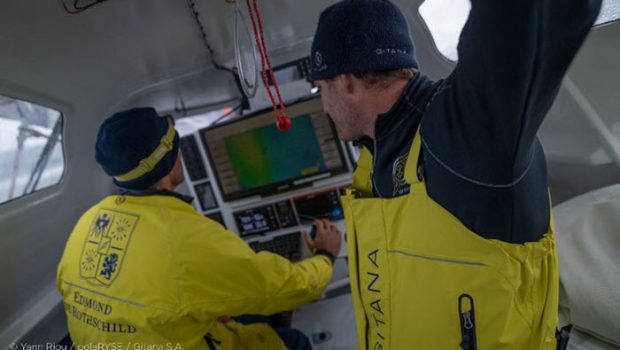

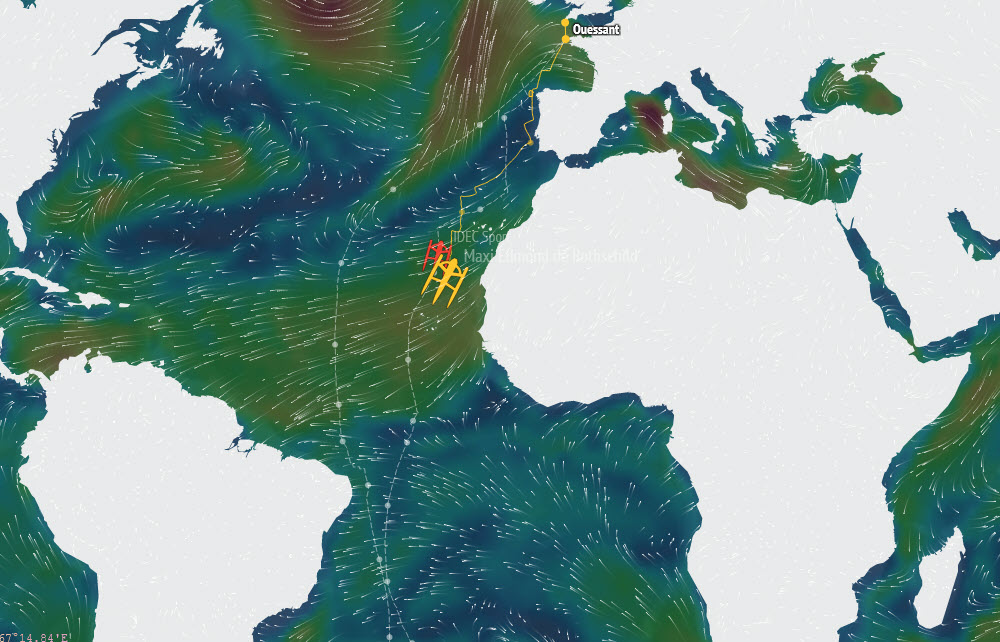


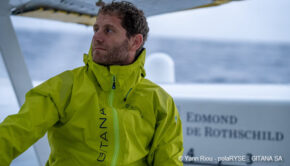
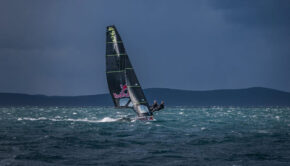
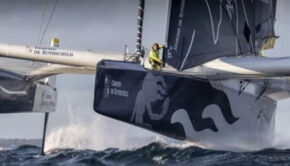
 We’ll keep your information safe.
We’ll keep your information safe.